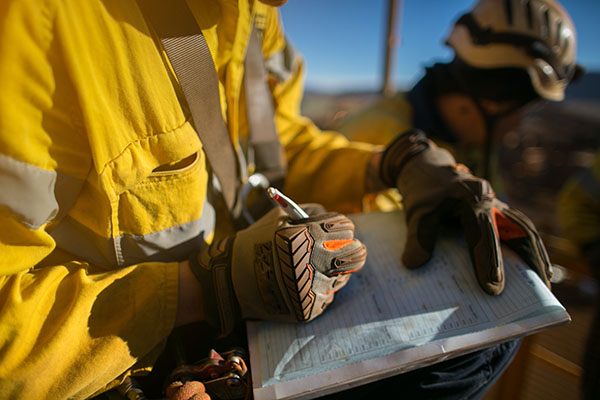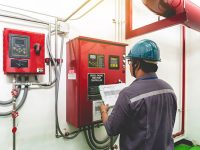 One of the main duties of a business owner is to keep the work premises safe and healthy. A safe and healthy workplace can motivate workers to do their job more productively.
One of the main duties of a business owner is to keep the work premises safe and healthy. A safe and healthy workplace can motivate workers to do their job more productively.
According to the WHS Code of Practice, an organisation shall have a unique system that reflects their safety business management, specifically in tackling risky and hazardous work.
Further, owners and officers shall see to it that the work activities comply with the WHS rules and regulations. This is to help business owners in prevent the danger and damages that come with an unsafe work environment.
Interested in keeping the business environment safe? Here’s how you can effectively manage health and safety risks involved in your business:
- Safety management commitment
The WHS Code of Practice provides that effective risk management come with a strong commitment from those who manage and operate the organisation. By commitment, it does not only involve the employer but also the employees, supply partners, and other people that you work with.
Effective risk management shall showcase how serious you are as an employer to implement the best safety working standard in the workplace. Your commitment shall reflect the following instances:
- Be knowledgeable on the safety and health problems that may arise during your business operation.
- Consult employees and other workers who deal with hazardous work on how you can deal and prevent the risk from happening.
- Invest in equipment or facilities that can make the job easier and safe.
- Educate your workers on their safety and health responsibilities so they could perform the task safely.
- Train your workers to always apply safety and health values at all times.
- Identify the risk
 Work-related hazards and risks may cause illness, injury, and health damage. These incidents may also cause damage to your companies’ finances and reputation. To prevent these hazards from happening, it is important to identify them first. Some of the usual hazards in the workplace are the following:
Work-related hazards and risks may cause illness, injury, and health damage. These incidents may also cause damage to your companies’ finances and reputation. To prevent these hazards from happening, it is important to identify them first. Some of the usual hazards in the workplace are the following:
- Untidy workplace
- Violence and bullying
- Manual tasks
- Chemicals
- Carelessness
- Performing tasks at heights
- Noise
- Poorly constructed business establishment
- Inadequate safety management system (e.g. untrained worker, no protective gear, etc.)
Once you have identified the hazards that may potentially harm your business and workers, the next step is identifying where you can find these risks. Here are the many ways you can find hazards in the work premises.
- Ask your contractors or workers of any hazards that they may have noticed in the workplace.
- Inspect the physical structure of the business establishment (e.g. walls, stairs, floor surfaces, driveways, exit, etc.)
- Inspect the appliances, equipment, and vehicles that are used to operate the business.
- Study the business’ injury records, including “near misses.”
- Review from your contractors, designers, suppliers about the construction or substances used in the workplace
- Risk assessment
The risk assessment will help you determine the likelihood of a risk to cause illness, injury, and damage to one’s health. It can also help you as a business owner identify the following:
- The severity of the risk
- The effectiveness of the existing prevention measures
- Actions to take to control risk
- The urgency of the actions to be taken
After the risk assessment, you will find out that some hazards can possess more risk problems. You need to address the more serious risks before dealing with the others.
You should also take note that people are different and the impact of these risks is not the same for everyone. Some may be less or more harmful because of the differences in experience, physical strength, and training.
- Remove the hazard
After identification and assessment of risk, what you need to do is solve the problem. It should be your goal to remove the health and safety hazard in the workplace. If this would not be feasible, have an alternative scheme that would at least prevent the hazard from happening.
Some hazards can be resolved right away, while others take time. Some would require little effort to fix while others are costly and require careful planning. Whatever the case may be, focus on the hazards that require immediate attention. Be careful in providing solutions though, as it might introduce new problems or hazards.
- Hierarchy of controls
The WHS laws require duty holders to make use of the hierarchy of control when fixing risk in the workplace. This tactic starts on the most effective measure and ends with the least effective one.
Always use the most effective as it is proven and tested. It is also practical and will solve your problem immediately. Only use the least effective as a last resort or with other higher controls.
Below is the hierarchy of controls that you can implement in your risk management:
- Eliminate the hazard.
 Your main objective should always be eliminating the hazard. The most effective way to do is not introducing new hazard in the work premises. Some ways to eliminate the risk can be replacing old vehicles, repairing damage, removing harmful chemicals, outsourcing processes, etc.
Your main objective should always be eliminating the hazard. The most effective way to do is not introducing new hazard in the work premises. Some ways to eliminate the risk can be replacing old vehicles, repairing damage, removing harmful chemicals, outsourcing processes, etc.
- Substitute the hazard.
If eliminating the hazard is not a feasible solution, you can try a safer alternative. For instance, you can substitute less chemical substance, lift smaller equipment or package, replace the pain in the work premises, and many more.
- Isolate the hazard.
This type of control would require you to keep your workers away from the hazard. You need to separate your workers from the hazard itself through barriers, walls, or keeping the hazardous material in storage.
- Make use of engineering controls.
In this technologically-advanced world, you can keep your workers safe by using mechanical tools, devices, or processes. You can use a trolley to transport heavy equipment, install electrical safety switches, place guards to protect machinery, etc.
- Have administrative controls.
Administrative controls are also the best alternative when all other controls fail to eliminate the risk. This involves work procedures such as providing training, seminar, or instruction material. For instance, training can help workers operate the machinery safely.
- Wear personal protective equipment (PPE)
Providing your workers PPE at work is the least reliable option you can do to keep them safe. However, you also need to make sure that they are trained to wear these items. Some important PPEs in the workplace are masks, hard hats, gloves, and eye protection.
- Evaluate the result
After you have provided solutions, find out if those were helpful and effective. Monitor and review the controls. Consult with your workers, especially those who have been affected by the risks.
Final Thoughts
These guidelines are patterned on the SA Code of Practice. Rest assured that each tip will help the duty holders comply with the health and safety risk management requirements. However, while the law focuses on the duty holders, the best risk management will be achieved only with a better employee-employer relationship.
Moreover, risk management is not an “on” and “off” task. It requires a strong commitment from both employer and employee every day. As a business owner, make sure that your solutions would not create further damage. Communicate with your workers to come up with new improvements and better solutions.




